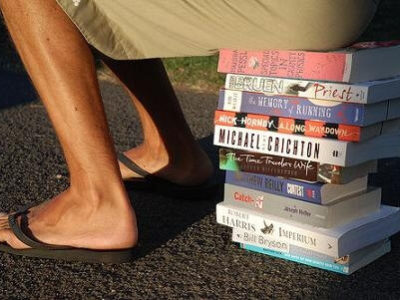The title of this article is actually a lie. College students do read, but not because they want to. They read because they have to. While the figure varies, on average students are reading somewhere around 4 hours a week – and this doesn’t include the hours spent reading social media. But given the amount of reading required by their teachers, students rarely have the time to read things they choose.
Straining your eyes to read words in teeny-tiny font that you probably will never need to know again other than for this specific class is boring and usually pretty pointless. Yet, it’s an unavoidable part of the undergraduate curriculum.
Many students are able to slide by reading the bare minimum and skimming the rest. However, there are some classes in which professors require that students read and understand a large volume of dense texts in order to pass. But what has this academic reliance on reading done to the art of reading for leisure?
Abby Jean Scanlon, a second-year engineering student and president of Penn State’s book club, absolutely loves reading. However, with at least three classes that require between two and four hours each of reading a week, Scanlon has found that she no longer has the time she once had to indulge in books. In fact, that was the reason she decided to join the book club in the first place. “[The club] forces me to take time out of other things to read,” said Scanlon. “This has the negative effect of making my reading stressful and rushed, but it is still better than not reading at all.”
The consensus is that students do enjoy reading. They read during breaks and over the summer. They read newspapers, social media and online articles when they get a break from their schoolwork. And despite their complaining, students still do the reading required of them by professors for the sake of their grades. But if students enjoy reading, why is required reading such a problem?
Cheryl McCallips, reference librarian for the Communications & Media Studies Department at Penn State’s library, believes that students may come into college with the wrong mindset.
“I think that students may be somewhat unprepared for the reading level that is required of college students and so the challenge of reading for class may be more difficult than they expected,” said McCallips. “My personal sense is that professors do not assign too much reading for students.” She points out that students tend to prefer reading that requires “a shorter attention span or less critical thought.”
Whether or not students enjoy reading either for leisure or for class, the importance of reading in college cannot be overstated. Dawn Amsberry, reference and instruction librarian in the Library Learning Services Department at Penn State’s library, said that “reading of any kind improves comprehension and vocabulary, so students who read more are likely to do better academically than those who don’t read.” Amsberry also said that reading for pleasure can “help improve concentration and focus.”
Contrary to the idea that many college students do not have sufficient time to read for their own leisure, Amsberry said that the leisure reading collection is heavily used by undergraduates at Penn State. However, these novels tend to be checked out of the library during semester breaks, as that is when most students find the time to read on their own. Scanlon, for example, managed to read 30 novels last summer.
College students may choose to skim over certain chapters or skip an assignment here or there. Maybe they love what they’re reading…or they maybe they absolutely hate it. But the reality is: college students do, and always will, read.



















